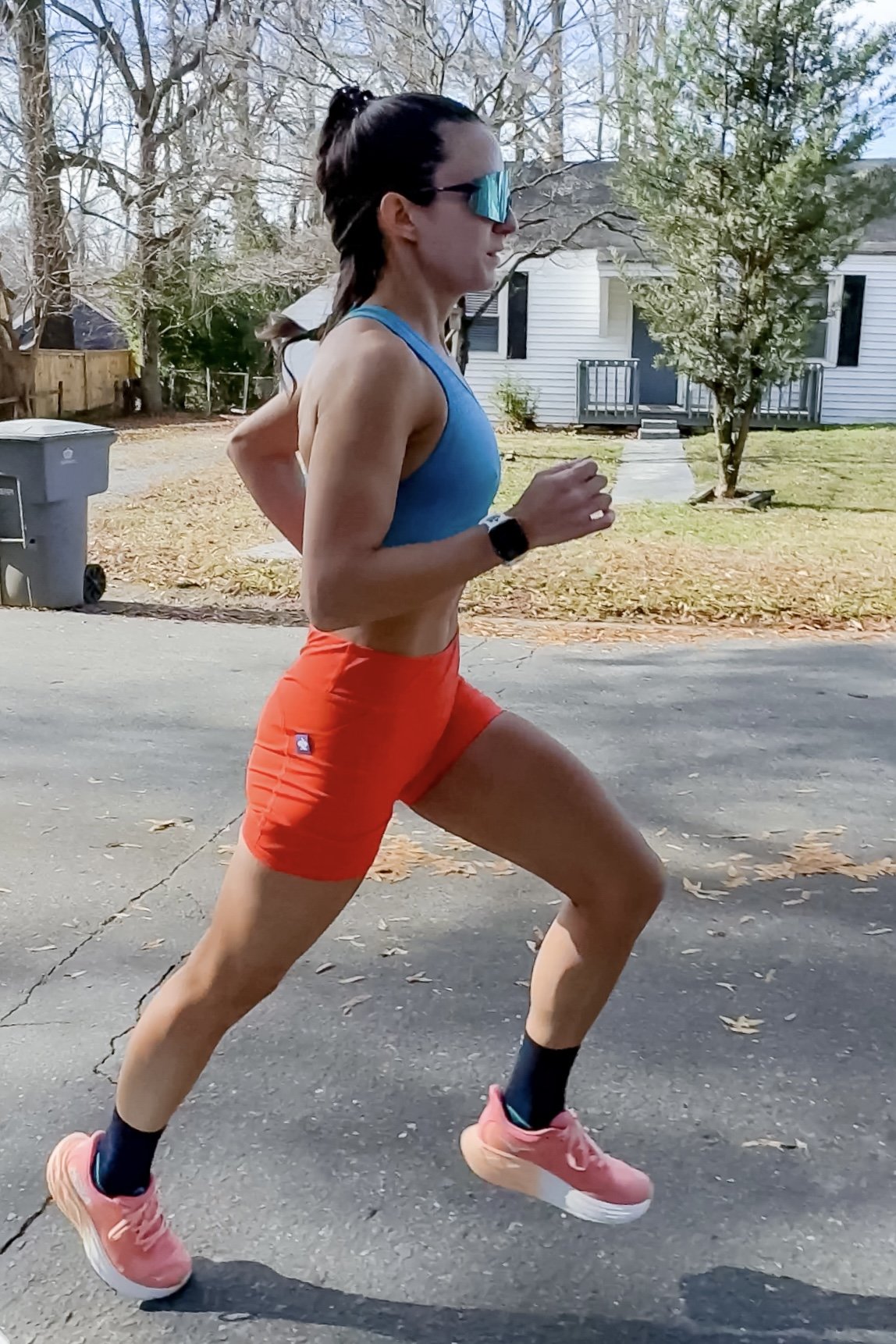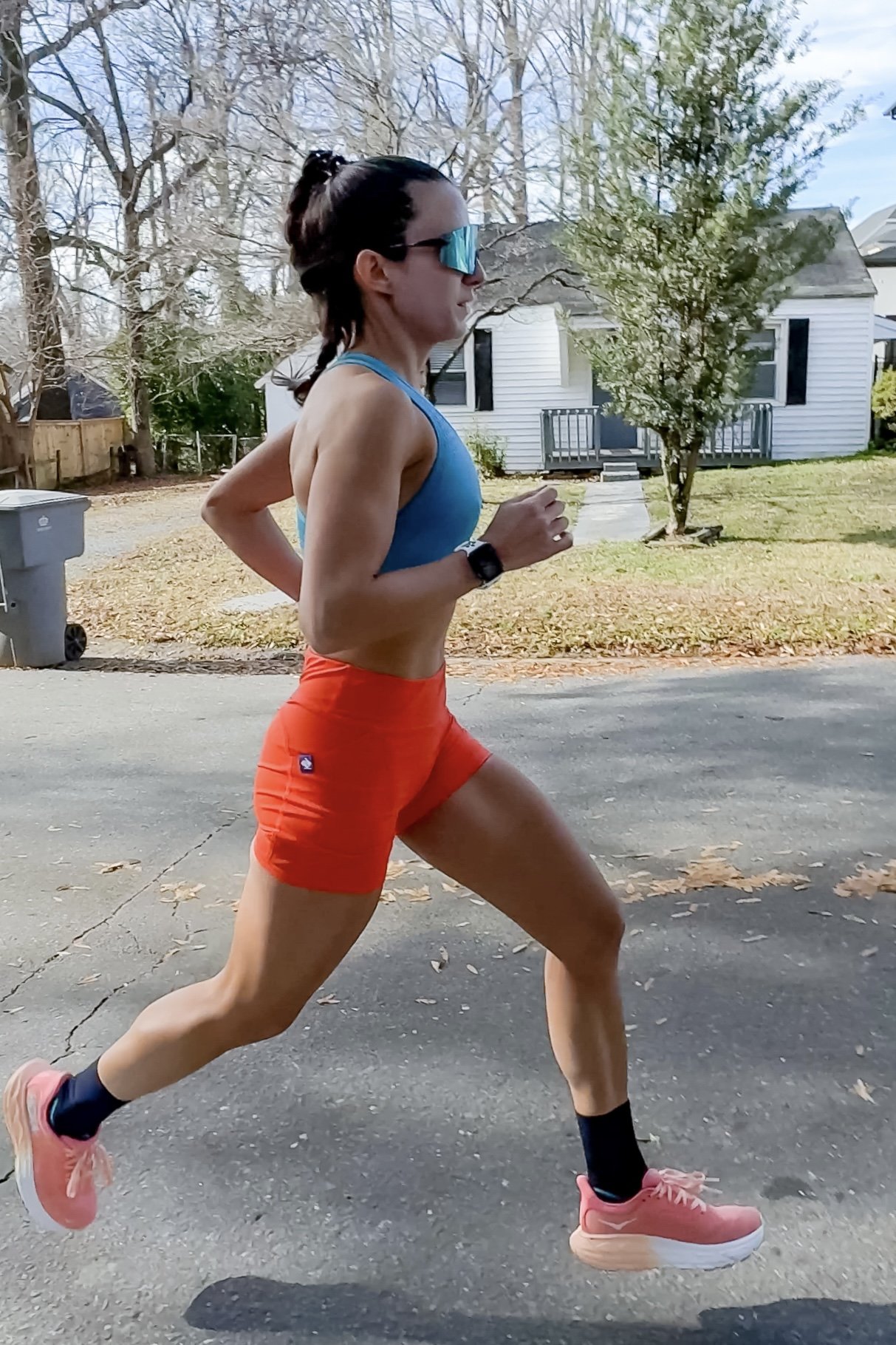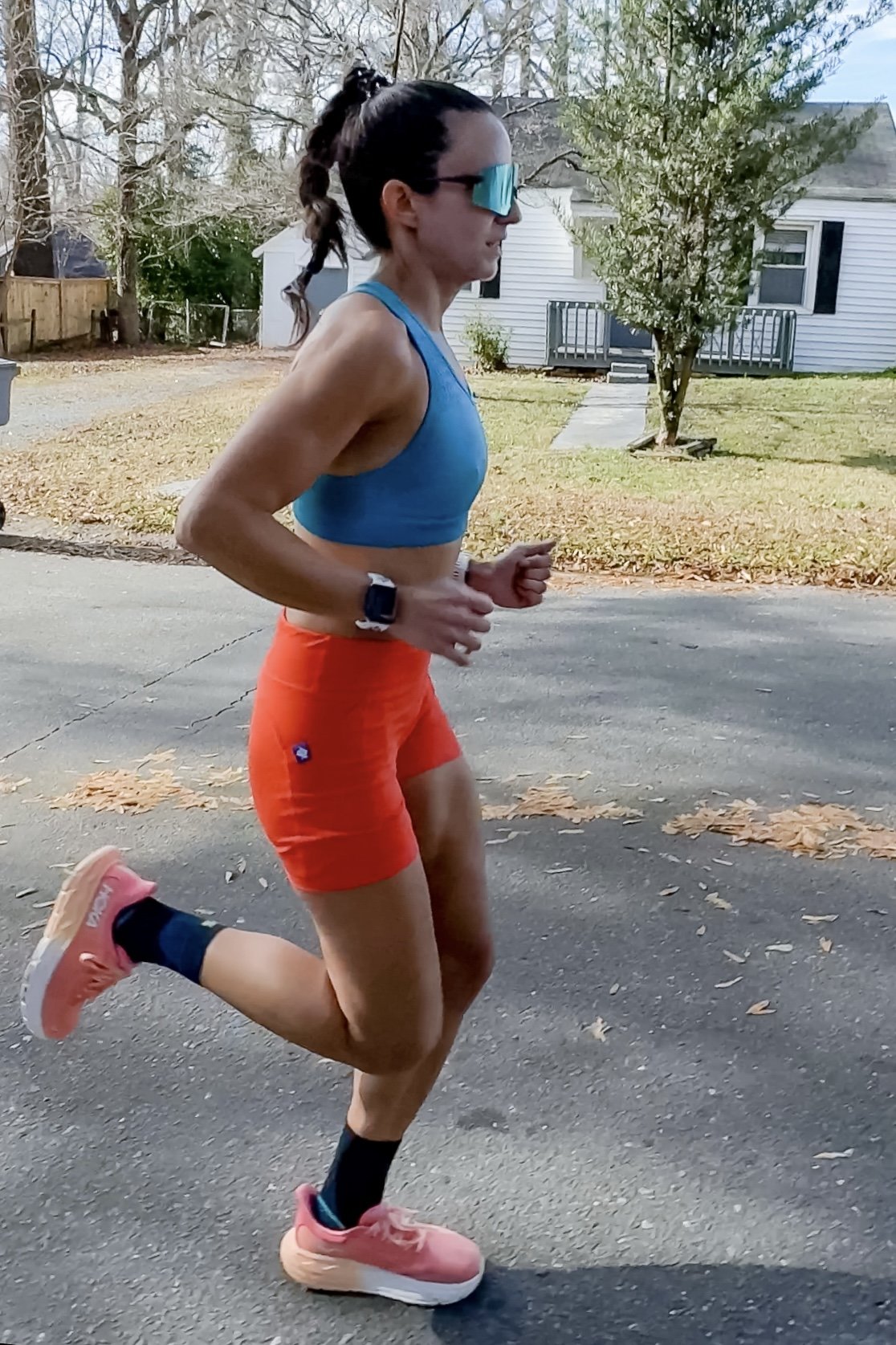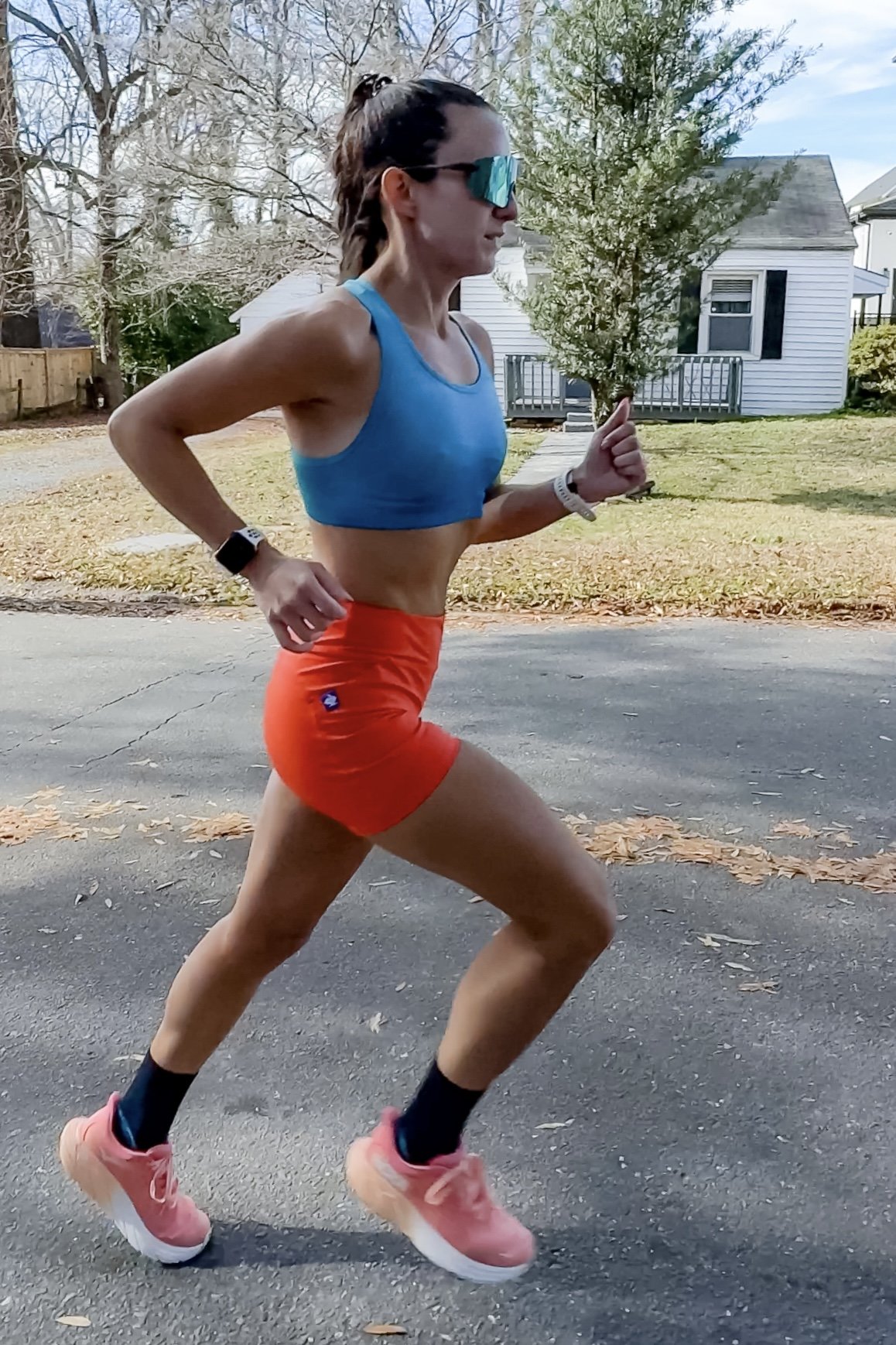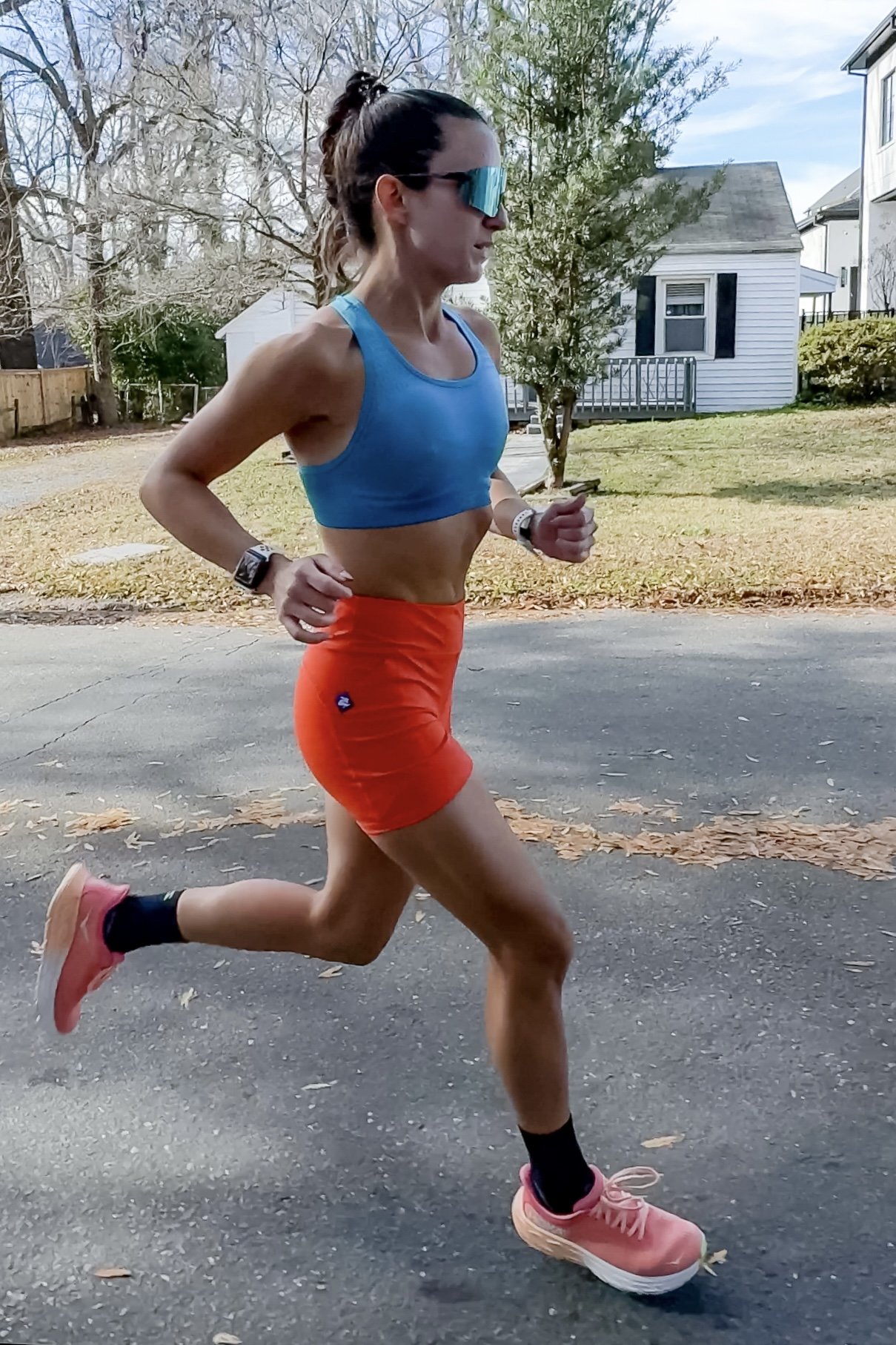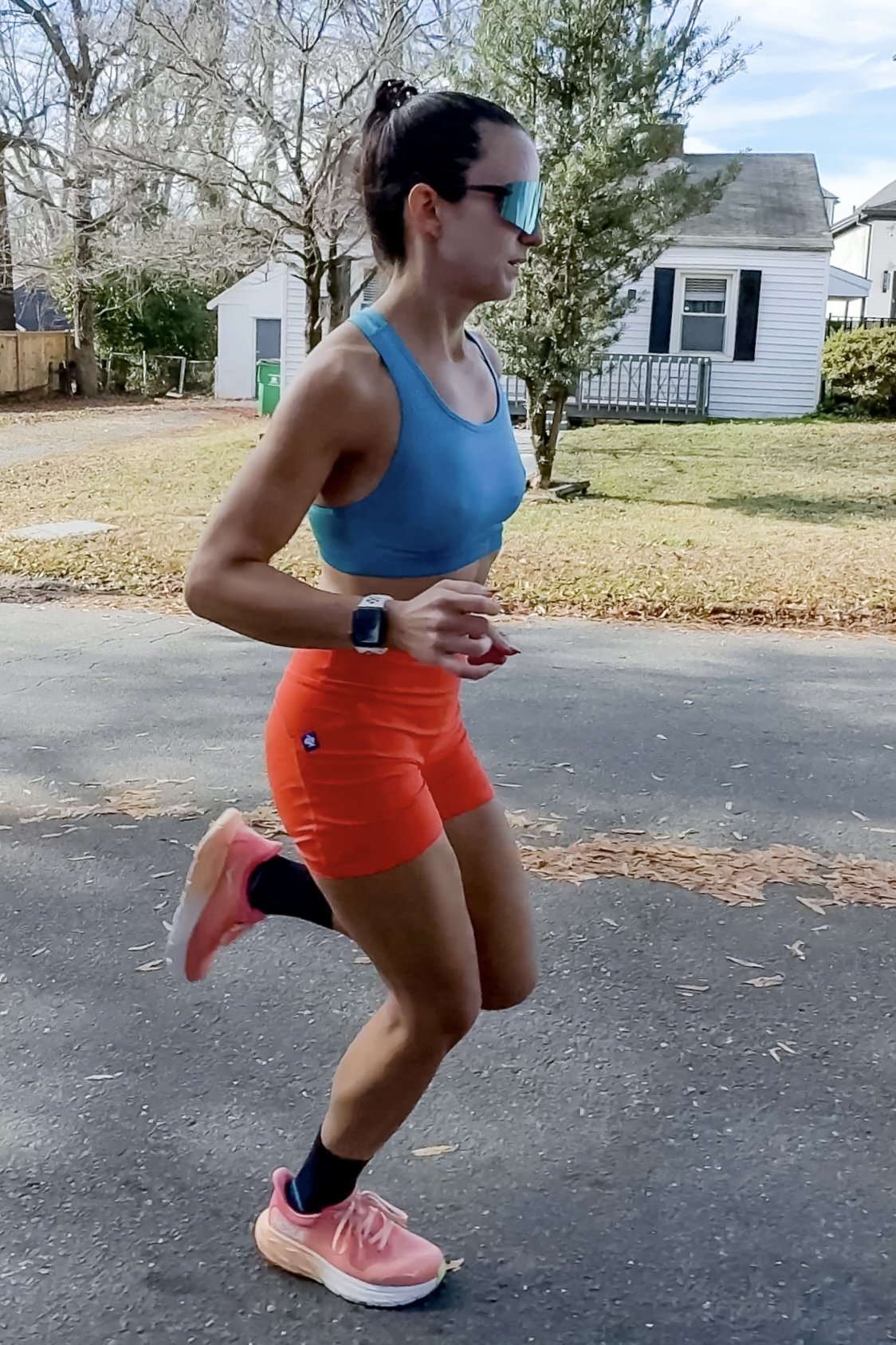Months and months of training go by and it’s finally race day. You warm up and enthusiastically start your long-awaited marathon, get through 20 miles at your PR speed, and suddenly your leg begins tightening up and causes you to stop mid-run. This is exactly what happened to me in January 2020 at the Miami Marathon. The race that was supposed to be my debut sub-3 marathon. Stretching and a bit of walking at the moment made zero difference, and every single time I sped back up to my previous pace, I’d get a sharp pain in my center hamstring. I carefully yo-yo’ed between a fast run and slow jog for the last 6.2 miles to the finish line in disappointment. So many months were put into building up mileage to get to my 20+ milers and I had so much confidence that the rest of the marathon miles would be smooth. My legs just couldn’t handle the extra work on race day and my hamstrings ended up taking a toll for that last portion.
Many marathon training plans cap the long run at 20 miles, and some are just 16 miles! As long as all training components are completed properly and the body remains healthy throughout the cycle, the extra miles should be doable. But in many cases, the weak areas of the body will show their deficits once there comes a task that the body is not used to—like those last few miles of a marathon. For me it was the hamstrings. Hamstring injuries and pain are one of the most common complaints among distance runners. This group of muscles plays a vital role in the running cycle, yet many athletes do not prioritize hamstring strength during training.
The Role of the Hamstrings
The hamstrings are in charge of bending the knee and extending the thigh behind the body. During the running cycle these motions occur during the stance phase, which is when one foot is planted on the ground (knee bent) and the body begins to drive itself forward, and during push-off, when the leg must remain behind the body (thigh extended back) until it needs to swing back to the front. Most runners will emphasize the importance of the quads and calves for these phases of running due to their need to concentrically contract to get through the motions. The quads are the main muscles used in the entire stance phase, since they are in charge of extending the knee. Therefore from heel strike to midstance to propulsion, the quads are constantly contracting to control the amount of knee extension through the push-off.
Many runners become “quad-dominant”, meaning they place a large emphasis on high quad activation compared to other muscle groups during the running cycle. During this time the hamstrings become quiet and basically ignored, therefore they remain weaker. Besides the direct knee flexor and hip extensor role, they play a very important role in controlling the amount of knee extension during the swing phase (when the leg is in mid-air), as well as limiting hyperextension during the stance phase. The only way these two functions are possible is if there is sufficient hamstring strength to begin with. I know all of this sounds a bit confusing, so I added snapshots of the different phases of the running gait cycle below to get a better idea.
Quad vs. Hamstrings Strength
Research shows that most recreational runners have quad muscles 30 to 40% stronger than the hamstring muscles. This creates a big disadvantage to proper running mechanics and makes it difficult to increase speed. The general job of the hamstrings will automatically help extend the hip during push-off and keep the knee bent during the swing phase, but the other important work gets left solely to the quads. When the ratio of quad to hamstring strength is further away from 1:1 there is a much larger risk of injury. The quads may become overused and end up not firing properly or enough, but the hamstrings are usually the muscle to take the beating during distance running, since they are usually weaker to begin with.
Hamstring Injuries
Tendonitis is the most common diagnosis in the hamstring muscle group. Tendonitis is basically inflammation of a tendon, which is the part of the muscle that inserts into a bone. This condition can occur in either the insertion point at the back of the knee or up in the hip area where the muscle inserts into the “sitting bone” in the rear, which is termed a high hamstring tendinopathy (HHT). The latter is more common in distance runners and usually occurs when increasing speed or intensity too quickly or beginning a hard workout without warming up. Other factors that increase the risk of developing HHT are weakness in the glutes and core muscles, poor flexibility of the hamstrings, or uneven pelvic rotation. For runners, a common cause is muscle tightness and a poor ratio of quad to hamstring strength, as mentioned earlier.
If left untreated, this inflammatory condition may lead to a tear, which will most definitely put a long halt on any running. Usually tendonitis becomes severely painful that running is almost impossible to do anyways. The most common symptoms of tendonitis are a deep, achy pain in the center of the buttocks once running is initiated, then a lessening of the pain after a few minutes, but a return as running continues for a long distance. This deep ache is usually also felt once running is stopped for several hours. It is critical to treat hamstring tendinopathy as soon as it begins in order to avoid increased strain and possible tearing.
Treatment & Prevention
The most important part of hamstring injury recovery is a break from aggravating activities, which means running and other higher intensity exercises should be avoided. The main focus at this time should be getting rid of the inflammation by icing, light massage and gentle foam rolling, and elevating the leg. If the treatment is started right away, this phase is short. To prevent the tendonitis from returning, it is crucial to begin incorporating a proper warmup, flexibility exercises for the hamstrings and other tight muscles in the hips, and hamstring and core strengthening. The goal should be to have as equal strength as possible between the quads and hamstrings. Below are my “easy 8” for core and glute strengthening—not because they are easy on the body (because they can actually challenge muscles you didn’t know you had!), but because they are easy to do anywhere.
Lacking the proper balance of muscle strength is a main cause of running injuries. Running requires a certain sequence of motions and the muscles must all work together to create efficient mechanics. The main difference in leg strength between highly-trained runners and recreational runners is that quad to hamstrings ratio I’ve been emphasizing. Keeping as close to 1:1 is ideal to ensure a higher running economy and less risk of injury…oh yeah—and faster running!



